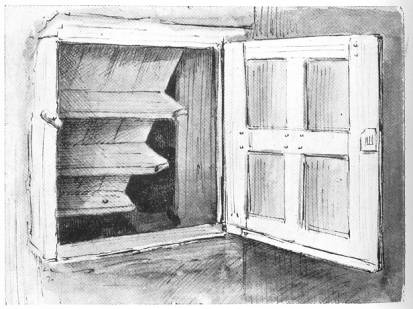 hiding places 1900s::But under the persecution and terror of the third reich, jewish children could not afford these simple, childlike pleasures.
hiding places 1900s::But under the persecution and terror of the third reich, jewish children could not afford these simple, childlike pleasures.Though the seriousness of their every action may not have been known in absolutes to them, they lived in a realm of cautiousness and distrust.
After having been forced to wear the yellow badge, forced out of school, taunted and attacked by others their age, disallowed from parks and other public places, jewish children felt the persecution.
Some jewish children went into hiding to escape the increasing persecution and, most importantly, the deportations.
Although the most famous example of children in hiding is the story of anne frank, every child in hiding had a different experience.
There were two main forms of hiding.
The first was physical hiding, which is very similar to the example of anne frank, where children physically hid in an annex, attic, cabinet, etc.
The second was identity hiding which is where jewish children pretended to be gentile and were out in society.
If you think about it now, where would you hide?
How would you accumulate enough food and provisions to last an uncertain length of time?
Location : a place to hide had to be found.
Through family and friends, information spread through a network of acquaintances.
Someone may offer to hide the family for free, others may ask a price.
Perhaps a neighbor offers to let you hide in a hole under his barn.
Perhaps you want to build a hiding place in your own house.
The size, comfort, and security of hiding places varied tremendously.
The length of it would have been a couple of meters, because we could all lie on top of each other comfortably.
This cabinet was in a cellar, so it was well hidden.
Our presence there was so secret, not even the children of the hiding family knew that we were there.
That was where we stayed for thirteen months!
Richard rozen, six years old when went into hiding children were most often not told about the presence of the hiding place in advance.
The location of the hiding place had to remain an absolute secret their lives depended on it.
Then would come the day to finally move into their hiding place.
For some, this day was preplanned; for others, this day was the day they heard word about impending harm or deportation.
As nonchalantly as possible, the family would pack a few remaining, important items and leave their home.
How long would they have to stay in their hiding place?
Would they be discovered?
Their lives now took on these dangerous uncertainties.
Daily life : each day, these children woke up, knowing that they must be extremely quiet, must move slowly, and that whether it was rain or shine outside, they would not be allowed to leave the confinement of their hiding place.
Many of these children would go months, even years, without seeing daylight.
In some instances, their parents would make them do a few indoor exercises and stretches to keep their muscles active.
I shudder at the thought of children physically hiding.
Children like to run and laugh and be loud.
In hiding, children had to remain absolutely quiet for hours, days, months, and even years.
But how do you explain this to children?
When you think about it, there really is no way to keep children busy that long with them not making any noise.
But since their lives depended upon it, children were forced to keep quiet.
Комментариев нет:
Отправить комментарий